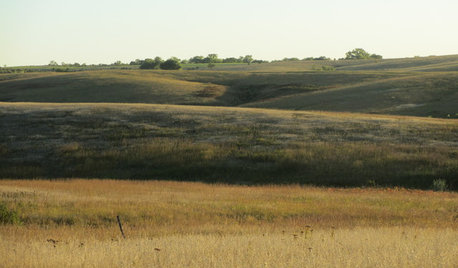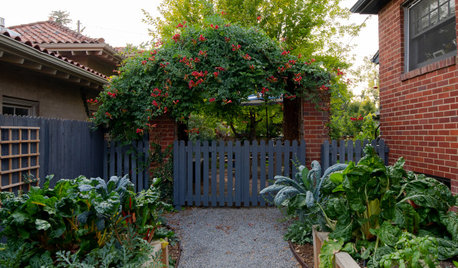We've Got Ripe Corn! No Worms, No Raccoons!
Okiedawn OK Zone 7
15 years ago
Related Stories

SUMMER FRUITS AND VEGETABLESHow to Grow Your Own Fresh, Sweet Corn
Here's how to plant and care for your own mini cornfield
Full Story
LIFEHow to Outsmart Backyard Critters
Learn to think like a raccoon, skunk or squirrel to keep your home safe and your garden intact
Full Story
GARDENING GUIDESHow to Get Your Prairie On
Have a field day with your landscape, even if you've got just a few modern containers on a paved path
Full Story
MOST POPULARMeet a Lawn Alternative That Works Wonders
Carex can replace turfgrass in any spot, is low maintenance and adjusts easily. Add its good looks and you’ve got a ground cover winner
Full Story
EDIBLE GARDENSHow to Grow Your Own Sweet Summer Crops
This guide will help any gardener get started on growing the freshest warm-season veggies and berries for summer
Full Story
GARDENING GUIDESHow to Keep Your Citrus Trees Well Fed and Healthy
Ripe for some citrus fertilizer know-how? This mini guide will help your lemon, orange and grapefruit trees flourish
Full Story
EDIBLE GARDENSHow to Grow 10 Favorite Fruit Trees at Home
Plant a mini orchard in fall, winter or early spring to enjoy fresh-off-the-tree fruit the following year
Full Story
GARDENING GUIDES12 Edibles Perfect to Plant in Late Summer
Keep those homegrown vegetables and greens coming well into fall
Full Story
SPRING GARDENINGSummer Crops: How to Grow Strawberries
Pluck your own sweet strawberries right from the garden vine for smoothies, salads or eating then and there
Full Story
SUMMER GARDENINGHouzz Call: Please Show Us Your Summer Garden!
Share pictures of your home and yard this summer — we’d love to feature them in an upcoming story
Full StorySponsored



MariposaTraicionera
Okiedawn OK Zone 7Original Author
Related Discussions
We've got it all...
Q
Q: When is corn ready to harvest? A: When the raccoons eat it all
Q
We've Been Vandalized !
Q
Worms in corn stalks
Q
MariposaTraicionera
Okiedawn OK Zone 7Original Author
okprairie
Okiedawn OK Zone 7Original Author
okiegarden
Okiedawn OK Zone 7Original Author
kirts
Okiedawn OK Zone 7Original Author
kirts
Okiedawn OK Zone 7Original Author
wolflover
Okiedawn OK Zone 7Original Author
MariposaTraicionera
Okiedawn OK Zone 7Original Author
MariposaTraicionera